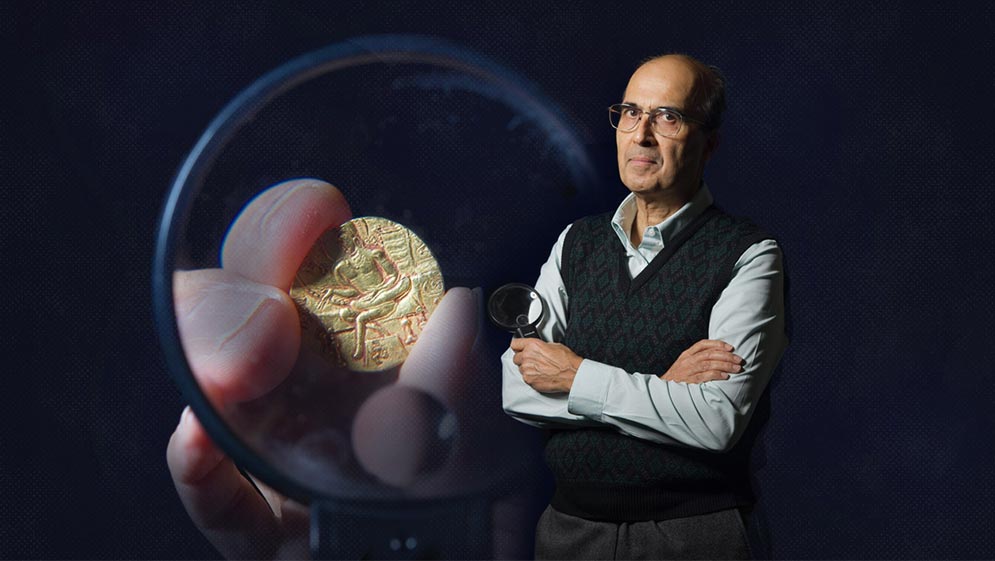Here is how a several centuries–old coin may rewrite a key chapter in the history of ancient India: In 1851, a hoard of gold coins issued by several kings from the Gupta dynasty was unearthed near the holy city of Varanasi, in northern India. The Guptas, who ruled from the 4th to 6th centuries AD, ushered in the Golden Age of ancient India, a blossoming of the arts and sciences that produced the concept of zero, a heliocentric astronomy, and the Kama Sutra.
Gupta kings stamped their given names on the front of their coins and, on the back, an assumed name ending in “aditya,” or sun. On two of the coins in the hoard, scholars were able to read only the king’s assumed name—Prakasaditya, or splendor of the sun—but it seemed obvious that these, too, were Gupta coins. Few scholars disagreed. Without the given name, however, the mystery would remain for more than 160 years: Which Gupta king was Prakasaditya? When did he rule?
Pankaj Tandon is a College of Arts & Sciences associate professor of economics by training and, by passion, a scholar of ancient coins—or numismatist. In 2010, Tandon, who specializes in coins of ancient India, which to numismatists includes what are today Afghanistan, Bangladesh, Bhutan, Nepal, Pakistan, and Sri Lanka, set out to crack the puzzle of Prakasaditya. In 1990, an Austrian numismatist named Robert Göbl had speculated without substantive proof that Prakasaditya was a Hun, but most scholars had continued to regard the mystery king as a Gupta. Tandon began by scouring more than 60 images of the coin—additional specimens had been found over the years—but the coins had all been poorly made and not one image revealed the king’s given name.
Tandon spent the 2011–12 academic year in India on a Fulbright-Nehru fellowship, teaching microeconomics at St. Stephen’s College, his alma mater, in the capital of New Delhi. On weekends, he made road trips to several government museums in the nearby state of Uttar Pradesh to examine coins. On a visit to the Lucknow State Museum, he was given a rare, behind-the-scenes tour of an uncatalogued collection of dozens of Gupta coins. With no time for careful viewing, he hastily took pictures of the lot.
It wasn’t until he got home and sorted through the images that he realized that one of them was of the mystery coin.
Full Story














































Related Stories
Noted Scholar of Inequality to Lead BU School of Law
Angela Onwuachi-Willig drawn by BU’s history of access and diversity
Medical Professor Named Searle Scholar
Biologist Neil Ganem is the first BU researcher to earn the award
First Lu Lingzi Scholar Studying Economics
Yifan Xu says scholarship shows the good people can do
Post Your Comment